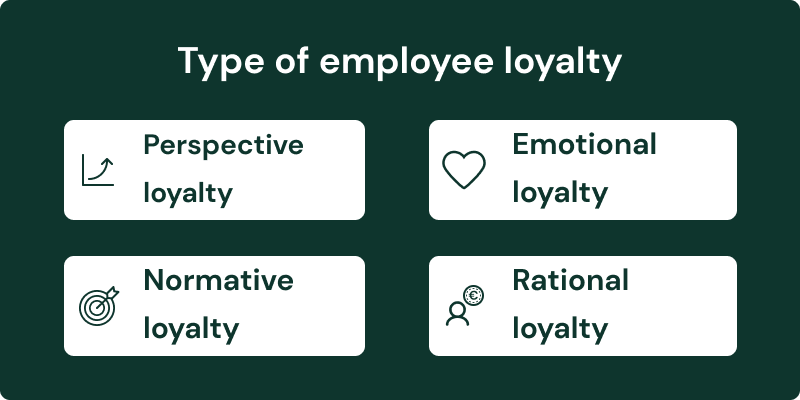Finding exceptional employees is no small feat—but keeping them? That’s where the real challenge lies. Regardless of economic conditions, retaining talent pays off in big ways. The best candidates are always in high demand, and competition for their loyalty is fierce. Taking action to boost employee retention is key for any company.
But what exactly is employee retention, and how can businesses improve it? In this article, we’ll offer six pillars with direct actions you can take to boost employee retention.
Inhalt
- Was ist Mitarbeiterbindung? Welche Arten von Mitarbeiterbindung gibt es?
- Warum ist Mitarbeiterbindung so wichtig?
- Was beeinflusst die Mitarbeiterbindung?
- Warum Mitarbeiterbindung nur mit Mitarbeiterzufriedenheit funktioniert?
- Welche Maßnahmen für Mitarbeiterbindung gibt es?
- Das 6 Säulen Modell
- Fazit
What Is Employee Retention?
Employee retention refers to the bond between an employee and their organization. Management consultant Gunther Wolf defines it as:
“Employee retention refers to the degree of solidarity between the employee and the organization as a whole.”
Like any strong relationship, this bond thrives on reciprocity. For employees, the connection extends beyond the company itself—it can include their manager, their team, or even their day-to-day responsibilities.
The Types of Employee Retention
Employee retention can be categorized into four key types:
- Management retention: The relationship with a manager or leadership team.
- Company retention: Loyalty to the organization and its values.
- Team retention: Connection with colleagues and the workplace community.
- Task retention: Fulfillment derived from job responsibilities.
Each individual may prioritize these factors differently. For some, the company’s reputation or their manager’s leadership style matters most. For others, it’s about camaraderie with teammates or passion for their work. A strong employee bond usually results from a combination of these elements.
Another useful framework for understanding retention divides it into four types of loyalty:
- Rational loyalty: Competitive pay and benefits.
2. Emotional loyalty: Appreciation and meaningful relationships.
3. Normative loyalty: Alignment with corporate values and vision.
4. Rational loyalty: Competitive pay and benefits.

Why Is Employee Retention So Important?
The business case for employee retention is clear: keeping great employees saves time, money, and energy. Recruitment and onboarding are costly, and new hires often take time to reach peak productivity. Constantly replacing employees hampers momentum and team cohesion.
By strengthening employee loyalty, companies can achieve:
- Lower turnover and reduced hiring costs
- Higher productivity and engagement
- Improved corporate culture and morale
- Better employee branding
- Enhanced employee happiness and satisfaction
Retention is not just a cost-saving measure—it’s a catalyst for growth and success.
What Drives Employee Retention?
Two primary factors shape employee retention:
- Effective recruiting: Hiring the right people from the start.
- Employee satisfaction: Ensuring long-term engagement and happiness.
Retention begins well before an employee’s first day on the job. Aligning expectations during the hiring process is critical. Consider this example:
Imagine you’ve narrowed your candidates down to two equally qualified applicants. Candidate A demands a higher salary than your budget allows and prefers remote work, while Candidate B is comfortable with the offered salary and loves the collaborative office environment. If your company’s culture thrives on in-person teamwork, Candidate B is likely the better fit.
This highlights a key principle: clear communication during hiring sets the stage for employee satisfaction, which in turn drives retention.
The Role of Employee Satisfaction in Retention
Simply put, satisfied employees are loyal employees. They enjoy their work, feel valued, and align with the company’s goals and culture. Key factors that influence satisfaction include:
- Challenging and meaningful tasks
- Positive working conditions
- Competitive compensation
- Job security
- Clear expectations
- Creative freedom
- Opportunities for growth and training
- A supportive, transparent management style
- A rewarding and connected team
Focusing on these areas ensures employees feel engaged and committed to their roles.
How to Boost Retention: The 6 Pillar Model
To help businesses improve employee retention, the 6 Pillar Model outlines practical strategies across six key areas:
- Work Organization and Environment
- Health, Sport, and Leisure
- Personal Development
- Employer Branding
- Company Culture and Communication
- Perks and Benefits
1. Work Organization and Environment
Create a workplace where employees feel happy and supported. Ideas include:
- Offering hybrid work models for better work-life balance.
- Providing ergonomic equipment and modern tools.
- Regularly seeking employee feedback on improving workflows.
- Supporting transportation needs with commuter benefits.
2. Health, Sport, and Leisure
Encourage employees to maintain a healthy balance between work and well-being. Try:
- Organizing team-building outdoor activities.
- Hosting health and wellness days with experts.
- Offering resources for stress management and mental health.
3. Personal Development
Empower employees to grow with the company. Consider:
- Promoting from within whenever possible.
- Providing annual training budgets.
- Offering leadership coaching for managers.
- Introducing job rotation programs for variety and learning.
4. Employer Branding
Make your company a workplace people are proud to represent. Examples include:
- Defining and living by clear corporate values.
- Participating in career fairs and hosting open-house events.
- Encouraging employees to refer candidates with incentives.
- Actively managing your presence on professional networks and review sites.
5. Company Culture and Communication
Foster a culture of inclusion and transparency. Strategies include:
- Promoting teamwork and constructive conflict resolution.
- Celebrating achievements on social media and internal platforms.
- Supporting charitable initiatives and community involvement.
6. Perks and Benefits
Offer benefits that matter. Ideas include:
- Subsidizing meals or gym memberships.
- Covering work-from-home expenses like internet costs.
- Providing flexible personal days for self-care or volunteering.
- Access to mental health support platforms like nilo, one of the most meaningful and impactful benefits you can provide.
Happy employees are the foundation of a thriving business. Investing in their satisfaction and loyalty is essential—not just during a talent shortage but always. By focusing on meaningful engagement and support, companies can build a culture that attracts, retains, and empowers the best talent, ensuring long-term success.








